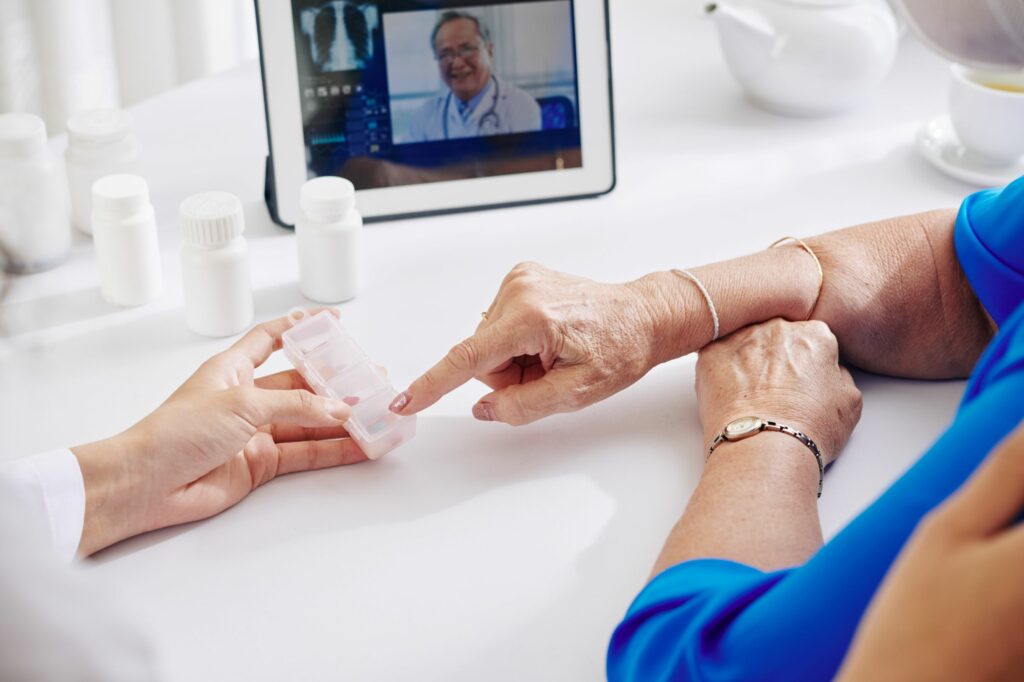The problem of counterfeit drugs is becoming more prevalent in the United States, with counterfeit drugs being imported from all over the world. Counterfeit medications not only deprive customers of money by requiring them to pay for goods of little to no medical value, but they may also result in untreated health issues and even death.[1] Counterfeit drugs and their availability pose a number of challenges. Counterfeit drugs, in particular, can raise customer concerns about protection, which can lead to a reduction in patient adherence.
Preventing the entry of counterfeit medicines into the United States is particularly difficult, in part because nearly 40% of medications are manufactured overseas and approximately 80% of active pharmaceutical components are imported.[2] Buyers are drawn to lower prices because many of these drugs are costly. The rise of Internet pharmacy has made drug safety control more difficult. Since many of these goods travel through a long and complex distribution network, it can be difficult to detect counterfeits. This creates opportunities for counterfeits to enter the legal supply chain.
Definition of Counterfeit Drugs
A counterfeit pharmaceutical[2] is a drug (either active pharmaceutical ingredient (API), intermediate or finished dosage form) that has been purposefully and fraudulently mislabeled or misbranded as to its identity or source. Both brand name and generic goods may be counterfeited. Drugs without the active ingredient, with an inadequate or disproportionate amount of the active ingredient, with the incorrect active ingredient, or with fake packaging are examples of counterfeit drugs.
Harmful Effects of Counterfeit Drugs
The use of counterfeit drugs will result in a number of issues for patients. The various scenarios usually depend on the counterfeit drug’s ingredients.
- Counterfeit drug that contains no active ingredients or no harmful ingredients: the drug fails to help the patient recover, which may lead to serious consequences. In the case of antibiotics, for example, this can promote antibiotic resistance and the use of stronger antibiotics, because doctors may think that the first-line drug was not effective, not realizing that the patient was taking a counterfeit drug.
- Counterfeit drug has no active ingredient and may have any number of harmful ingredients: (e.g. bacteria-laced water, toxic yellow paint, floor wax, colored dye, powdered cement, boric acid, and antifreeze) More than 500 children have died around the world as a result of ethylene glycol-tainted cough syrup (ie, antifreeze). In another instance, counterfeit pediatric cystic fibrosis inhalers[3] were discovered to contain contaminated bacteria that went straight into the lungs of unsuspecting children. Another case included cancer patients who were given counterfeit erythropoietin, which was mixed with bacterially infected water and injected directly into the patients.
- Counterfeit drug that contains the wrong concentration or wrong dose of the drug: One example is a doctor who was given a research version of onabotulinumtoxinA (Botox)[4] that was much more concentrated than the actual drug and was not intended for human use. For some patients, including the physician who was using it, this resulted in respiratory paralysis[5] and near death. In general, counterfeit drugs cause uncertainty, confusion, and skepticism about the real drug’s worth, which may contribute to the use of less desirable drugs or therapies.
Internet Pharmacies and Buying Drugs Online
The risks of buying counterfeit medications from “Internet Pharmacies”[6] remain largely unknown to consumers (or patients) in the United States. This ignorance is leading to what is quickly becoming a major public health issue. In the vast majority of cases, counterfeit medications are both unsafe and ineffective. The use of these medications can result in a worsening of illness or even death.
The FDA is responsible for ensuring that pharmaceuticals are safe and reliable, but this mission is becoming increasingly difficult as patients opt to buy from rogue Internet pharmacies[7] rather than from conventional sources of medicine. Consumers are attracted by lower prices, and the ability to buy prescription drugs without a prescription.
While Internet pharmacies frequently boast that they can save consumers up to 75% on drug costs, patients frequently receive medications that provide no benefit and may actually cause more harm than good. It is possible to obtain legitimate medications at substantial discounts from overseas, however, the Federal Food, Drug, and Cosmetic Act[8] makes it technically illegal to import prescription medications[9] into the United States.
Solution: Anti-counterfeiting Technology and Remote Patient Monitoring
Call for action to policymakers and consumer education are very important to combat this problem. In addition, there is a new technology that makes counterfeiting a thing of the past. IDLogiq, now DrKumo Inc., developed a mobile application to check the authenticity of drugs and other goods with cryptographic authentication algorithms.
To ensure the access and correct prescription during the COVID-19 pandemic, DrKumo developed the Next-Generation Remote Patient Monitoring solutions that enable healthcare providers to check the conditions of their patients remotely. This technology allows them to monitor the progress of their patients in real-time, and make changes with the medication when necessary.
Takeaway
Solving the counterfeit drug problem is critical to ensuring that patients maintain their faith in pharmaceutical benefits and adhere to their treatment regimens. The advent of the Internet and the difficulty in policing drug suppliers operating via the Internet have resulted in a significant increase in consumer purchases of counterfeit drugs. Controlling the availability of counterfeit drugs is difficult, but necessary, given the enormous public health risks associated with counterfeit drugs, which can cause harm or death. Collaboration is required among all stakeholders.
References:
- Liang, B. A., & Mackey, T. K. (2012, July 24). Online risks to health-the problem of counterfeit drugs. Nature News. https://www.nature.com/articles/nrurol.2012.148
- The Committee on Energy and Commerce. (n.d.). https://docs.house.gov/meetings/IF/IF02/20140227/101804/HHRG-113-IF02-20140227-SD002.pdf
- Attorney General sues Tampa couple over fake cystic fibrosis drug (2005, April 7). https://www.safemedicines.org/wp-content/uploads/2013/08/5-AG-Sues-Tampa-Couple-Over-Fake-CF-Drug.pdf
- Center for Drug Evaluation and Research. (n.d.). Counterfeit version of Botox found in the United States. U.S. Food and Drug Administration. https://www.fda.gov/drugs/drug-safety-and-availability/counterfeit-version-botox-found-united-states
- Blackstone, E. A., Fuhr, J. P., & Pociask, S. (2014, June). The health and economic effects of counterfeit drugs. American health & drug benefits. https://www.ncbi.nlm.nih.gov/pmc/articles/PMC4105729/#R12
- Gao-13-560, internet pharmacies: Federal Agencies and States Face Challenges Combating Rogue Sites, Particulary Those Abroad (2013, July). https://www.gao.gov/assets/gao-13-560.pdf
- Rogue RX Activity Report – NABP. (2020). https://nabp.pharmacy/wp-content/uploads/2020/05/Rogue-Rx-Activity-Report-May-2020.pdf
- Commissioner, O. of the. (2018, March). Federal Food, Drug, and Cosmetic Act (FD&C Act). U.S. Food and Drug Administration. https://www.fda.gov/regulatory-information/laws-enforced-fda/federal-food-drug-and-cosmetic-act-fdc-act
- Commissioner, O. of the. (2018, March).. FD&C act chapter VIII: Imports and exports. U.S. Food and Drug Administration. https://www.fda.gov/regulatory-information/federal-food-drug-and-cosmetic-act-fdc-act/fdc-act-chapter-viii-imports-and-exports









